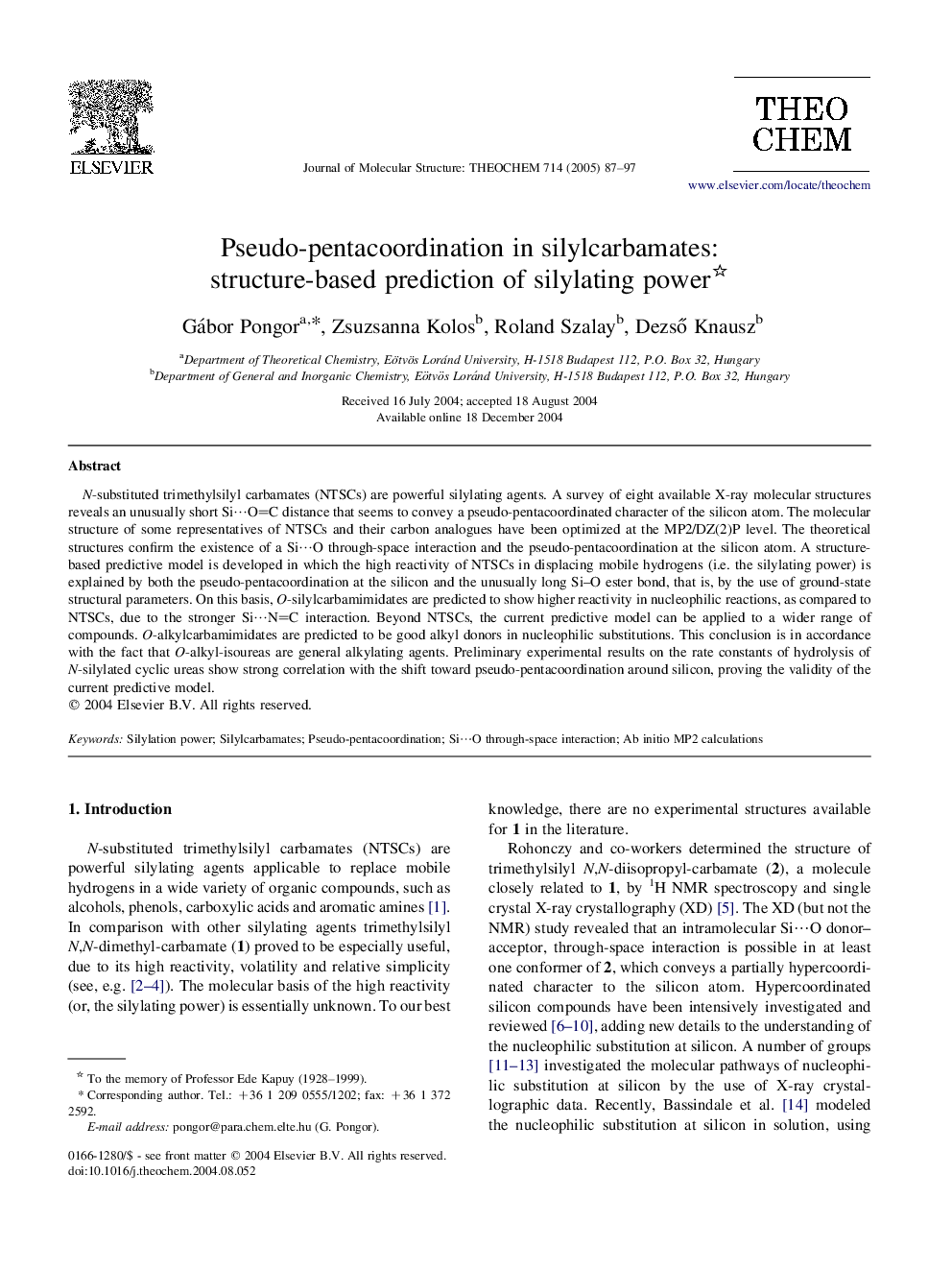| Article ID | Journal | Published Year | Pages | File Type |
|---|---|---|---|---|
| 9590716 | Journal of Molecular Structure: THEOCHEM | 2005 | 11 Pages |
Abstract
N-substituted trimethylsilyl carbamates (NTSCs) are powerful silylating agents. A survey of eight available X-ray molecular structures reveals an unusually short Siâ¯OC distance that seems to convey a pseudo-pentacoordinated character of the silicon atom. The molecular structure of some representatives of NTSCs and their carbon analogues have been optimized at the MP2/DZ(2)P level. The theoretical structures confirm the existence of a Siâ¯O through-space interaction and the pseudo-pentacoordination at the silicon atom. A structure-based predictive model is developed in which the high reactivity of NTSCs in displacing mobile hydrogens (i.e. the silylating power) is explained by both the pseudo-pentacoordination at the silicon and the unusually long Si-O ester bond, that is, by the use of ground-state structural parameters. On this basis, O-silylcarbamimidates are predicted to show higher reactivity in nucleophilic reactions, as compared to NTSCs, due to the stronger Siâ¯NC interaction. Beyond NTSCs, the current predictive model can be applied to a wider range of compounds. O-alkylcarbamimidates are predicted to be good alkyl donors in nucleophilic substitutions. This conclusion is in accordance with the fact that O-alkyl-isoureas are general alkylating agents. Preliminary experimental results on the rate constants of hydrolysis of N-silylated cyclic ureas show strong correlation with the shift toward pseudo-pentacoordination around silicon, proving the validity of the current predictive model.
Keywords
Related Topics
Physical Sciences and Engineering
Chemistry
Physical and Theoretical Chemistry
Authors
Gábor Pongor, Zsuzsanna Kolos, Roland Szalay, DezsÅ Knausz,
